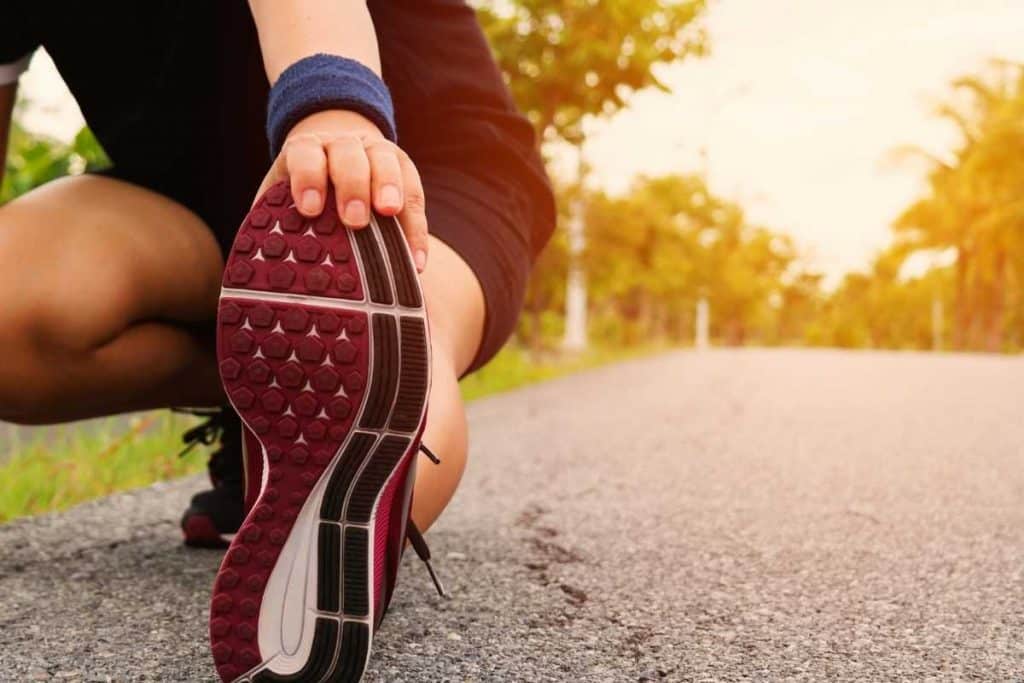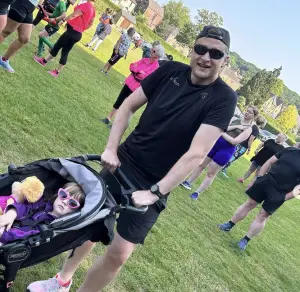At the age of fifty, you are old enough to know what is important and young enough to begin a whole new chapter, redefining the areas in your life that you are unhappy with, like your fitness. Maybe you had a health scare, or maybe your kids have all left home, and you can concentrate on yourself again. Whatever the reason, you are now fifty, and you want to start your running career. So, how do you do this?
Get a full physical and the doctor’s approval. Buy good shoes. Prioritize sun protection, warm-ups, cool-downs, targeted muscle strengthening, and proper recovery. Progress from walking to walking with running intervals, to running with walking intervals, to running non-stop. Don’t rush the progression.
Running at fifty is an excellent way to improve your cardiovascular fitness, reducing the risk of heart disease and high blood pressure. Strengthening your muscles also helps to keep your bones and joints supported.
So, consider the following steps when starting your running journey.
1. See Your Physician And Get A Full Medical Check-Up
When you are in your fifties, you are more at risk for medical conditions like:
- High blood pressure
- Heart disease
- Diabetes
- Osteoporosis
- Arthritis
- General pain
In the long term, taking up running can help to minimize your risk for these health conditions. However, if you already suffer from any of them, then starting to run needs to be done cautiously.
For example, running will improve your cardiovascular health, but if you push yourself too hard or too fast when starting, you can trigger cardiac incidents.
Whether or not you know of any health concerns, you should still get your doctor to give you a complete physical and their approval for you to start running.
If they have any concerns, they will let you know. But the chances are that they will encourage you in your new endeavor, and the concerns will be translated into helpful advice on how to proceed safely.
If you at any point in your training you suspect that there is something amiss health-wise, immediately schedule a follow-up appointment with your physician.
2. Invest In Good Equipment
You could more easily get away with a bad pair of running shoes in your twenties, but in your fifties, you need to equip yourself correctly.
You have committed to your new running program, so buying a high-quality pair of running shoes is an investment.

You will start with walking only—you should not immediately start running, even if you used to run. During the walking part of your program, you can use any decent pair of good-fitting trainers. This will give you time to save up for your running shoes if you need to.
When you are ready, visit a local running shop. The staff will be able to advise you on shoes that are right for you. Many running shops will offer gait analysis, where you run on a treadmill to see how your feet land. This helps them advise you on picking running shoes.
A good pair of running shoes should:
- Be able to absorb the impact of the foot hitting the ground to minimize how much shock force is transmitted up into your lower leg.
- Be stable enough to handle uneven surfaces without rolling or twisting.
- Have consistent cushioning, i.e., the cushioning should not get flattened while you run.
- Have good traction so that it can grip the running surface and prevent slipping.
- Be permeable, allowing air to flow through the shoe to your foot while you are running.
- Support your ankle without constricting it.
- Fit securely but also be able to accommodate the natural swelling that occurs during running.
Another worthwhile investment would be a heart rate monitor. If you have a cardiac condition, this is especially important. Learn the parameters of what is normal for you (everyone is slightly different) and use it as an indication of when to pick up the pace and when to slow down.
Many people already have items like Fit Bits or Apple Watches, which monitor even more than just your heart rate. So, there is no need to invest in a heart monitor specifically if you already have one of these.
Getting a fancy GPS watch is not needed when you are just starting out. It’s nice, but not necessary.
3. Invest in Sun Protection
Your skin becomes more fragile and thins out as you get older. Furthermore, by the time you are fifty, your skin has probably already had its fair share of sun damage. You start to discover problems like benign or even malignant tumors, sunspots, etc.
While you cannot undo what has already been done, you can still protect your skin from further damage if you plan on running outside. Wearing sunscreen is an absolute must. Put it on your face, neck, ears, arms, legs—any exposed skin.
To reduce the quantity of sunscreen you use, you can wear sleeves and long pants when you run. Just make sure that you buy clothing made out of breathable and sweat-wicking material so that you do not overheat.
Wearing a hat while running is also recommended, especially if your hair is thinning on top or if you are already bald. Just make sure your hat fits securely without squeezing your head, and a breathable material is also a good idea. Check our other post on running with a Hat.
4. Warm Up And Stretch Properly
As you age, your muscles and joints become naturally stiffer. Cold muscles are more contracted and have a lower blood supply. To suddenly stretch or exercise them is a sure way to injuring yourself before you even start.
As you do your warm-up, you stretch out your muscles slowly and increase the blood and oxygen supply to them, getting them ready for activity. You also get your heart rate up slightly to prepare it for the upcoming workout.
While most people recommend five to ten minutes of warming up, as an older runner, you should probably aim for ten to fifteen minutes. Walking or lifting a light dumbbell are good warm-up options.
Once you are warmed up, you can stretch properly. Static stretching can be quite painful if you are very stiff, so start with some dynamic stretches. Don’t forget about stretching out your upper body too. Running is a full-body workout, not just a lower-body workout.
5. Cool Down And Recover Properly
Cooling down after your run is important for helping your body to recover. Cooling down lets your heart rate gradually return to its resting rate, and your muscles to adjust to the reduced blood flow slowly.
To cool down, walk for ten to fifteen minutes after your run.
When you are in your fifties, your body needs longer to recover from a workout, especially when you are just beginning your running program or when you have done an intense run.
Listen to your body. If you need two or even three days to recover, then take the two or three days.
Another aspect of recovery is recovering after an injury. If you have hurt yourself running or otherwise, take the time to fully recover before getting back to your running. You do not want to perpetuate your injury and perhaps even prevent yourself from ever running again. Remember, your body heals slower at fifty.
6. Introduce A Stretching And Strengthening Routine Into Your Exercise
As you age, your flexibility and range of motion are naturally diminished. Stretching helps to counter this, keeping you supple and making your running form better, which helps to prevent injury.

Stretching should never be an intense workout session. It must be slow and gentle. You can try yoga or Pilates, or simply come up with a full-body stretching program yourself. There are plenty of videos and apps out there that can help you.
Another benefit of most stretching exercises is that they involve balance. As you get older, your balance deteriorates. This is why you hear about so many older people falling and injuring themselves.
Now, you are not an eighty-year-old yet. You are still a while away from where this will be a real issue, but you are helping your future self by starting now.
Because stretching is not an intense workout, you can add it to your recovery days.
You should also consider including a strengthening routine in your week. As you get older, your bones and muscles lose mass. By weight-training or doing calisthenics, you are working specific muscles and joints, and by working them, you are stimulating build-up.
Doing targeted strength training can also help to protect your joints from the impact of running, so make sure that you particularly target your glutes, hips, quads, and hamstrings.
Running At 50: Safety Tips
It is a good safety measure to bring your cellphone and ID when you are out running, but when you are running in your fifties, it is even more important. The fact is that you are at higher risk of injury, falling, cardiac emergencies, etc.
You should always have a way of calling for help, and if you are unconscious, then your ID will assist those who are helping you.
Do not run in out-of-the-way places. You might not feel like joining the super-fit twenty- and thirty-year-olds on the popular running trails, but it’s not safe to run in deserted places. If you do get injured, you want someone around to help you out.
Do not run without telling someone. Before you go out on your run, tell your spouse, child, friend, neighbor, etc. Let them know where you will be running and when you should be home. Then let them know when you get back.
Alternatively, you could run with a buddy. This could be your spouse, child, friend, neighbor, someone you met while out running, etc.
You can also join a running club. The society of such a community is hugely beneficial to your mental health and can also help you to stay motivated and accountable.
Running At 50: The Plan
Before you start running, set goals and work out a plan. Goals give you a clear point to work towards and provide you with motivation but make your goals realistic.
If you have a running plan already drawn up, it is easier to stick to your resolution to start running because you don’t have to think each day or each week about what you need to be doing. You simply check your schedule and get on with it.
Another good idea is to exercise at a regular time. Then you set that slot aside each day for running, stretching, strength training, etc.
According to WebMD (link), after fifty, you should do at least 150 minutes of cardio each week. This should be split over at least three days, with a minimum workout session of ten minutes.
Of course, you may need to build up to 150 minutes per week, and there is no problem with that. The golden rule for starting to run in your fifties is to take it slow. Sustainability is achieved through patient and moderate progression.
You will also probably end up adjusting your plan as you learn what your body is capable of and how it responds. For example, you might plan to do a cardio workout three or four times a week, but when you start, you realize that you need two days to recover between workouts.
Example Plan
You can use the following table as a guideline. You can add strength training to the Monday and Tuesday workouts because they are your most manageable cardio days. Then on one or two of your rest days, you can add in some stretching.
Remember to build the stretching and strengthening up slowly as well.
| Week | Mon | Tues | Wed | Thurs | Fri | Sat | Sun | Total |
| 1-2 | 15 min | 20 min | Rest | 25 min | Rest | 30 min | Rest | 90 min |
| 3-4 | 15 min | 25 min | Rest | 30 min | Rest | 35 min | Rest | 105 min |
| 5-6 | 20 min | 30 min | Rest | 35 min | Rest | 40 min | Rest | 125 min |
| 7-8 | 20 min | 35 min | Rest | 40 min | Rest | 45 min | Rest | 140 min |
| 9-10 | 25 min | 40 min | Rest | 45 min | Rest | 50 min | Rest | 160 min |
| 11-12 | 25 min | 45 min | Rest | 50 min | Rest | 55 min | Rest | 175 min |
The Stages Of Progression
There are four stages you should progress through when you are starting to run at fifty:
- Walking only
- Walking with intervals of running
- Running with intervals of walking
- Running non-stop
For the intervals of running while walking or walking while running, you can increase slowly as well.
Applying Your Workout Plan To The Progression Stages
You can apply the program in the table (or your own program) to each of these stages so that you will spend three months at each.
If you feel you that you can build up faster during some of the stages, then you can spend less time on these stages.
For example, if you already live quite an active life and walking for thirty to forty minutes at a time is easy for you. You can skip straight to week seven. Or you can go through the whole table program but maintain a fast walking pace.
Alternatively, you might need to stay at another stage for a little longer than three months, and that is okay too.
If you are struggling to adjust to a new stage, then do not be afraid to kick it back to the previous stage for a bit longer or alternate between the two.
For example, if you are struggling to reach the point when you are running non-stop, then run non-stop for the shorter workouts and go back to running with intervals of walking for the longer workouts.
Start By Walking
Whether you live a sedentary life or a relatively active life, always start your running program with walking.
Conclusion
Many of the guidelines that you should follow when starting to run at age fifty are the same at any other age; they just become more critical. Your body is still capable, but it is much less forgiving than a twenty-year-old body.
Probably the most important guidelines for starting to run in your fifties is to keep your physician involved and take it slow.
Well done for making the decision to start running and not allowing yourself to be dictated to by your age—besides, fifty is not old! By taking the first step to getting your body strong, you are taking a giant leap into a long, healthy, independent life that defies the number of candles on your birthday cake.
References
https://www.webmd.com/healthy-aging/ss/slideshow-health-problems-after-50
https://www.sciencedirect.com/science/article/pii/S1877705811009726
https://www.webmd.com/beauty/cosmetic-procedures-aging-skin#1
https://www.webmd.com/fitness-exercise/ss/slideshow-start-running
https://www.sharecare.com/health/how-to-prepare-for-exercise/why-warm-up-before-exercise
https://www.mayoclinic.org/healthy-lifestyle/fitness/in-depth/exercise/art-20045517#
https://www.runnersworld.com/beginner/a20866623/what-over-50-runners-need-to-know-before-they-start/
https://www.verywellfit.com/tips-for-running-in-your-50s-and-beyond-2911208
https://www.webmd.com/fitness-exercise/ss/slideshow-start-running
https://www.webmd.com/fitness-exercise/ss/slideshow-exercise-after-age-50


